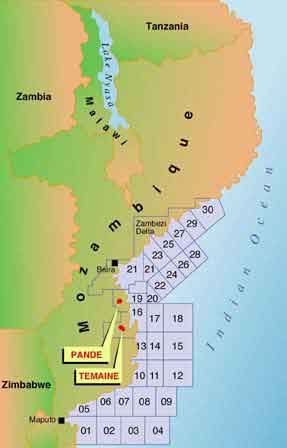Anadarko Petroleum is planning to make a final decision next year on how it will develop vast gas discoveries that the US company has made off the east coast of Mozambique.
There have been concerns that the collapse in oil prices could cause big delays in the commercialisation of Mozambique’s liquefied natural gas projects, but Al Walker, Anadarko’s chief executive, said the company was on track to start producing LNG by late 2020.
Pressing ahead with Anadarko’s project in the Rovuma Basin in the Indian Ocean hinges on the company taking a final investment decision, which had been expected this year.
This decision is now due to take place in the second half of next year, Mr Walker said, following important milestone agreements with the Mozambique government and Eni, the Italian oil company that has also made large gas discoveries in the Rovuma Basin.
Mr Walker told the Financial Times that the agreements announced last Thursday were a “very important step in the direction of reaching [a final investment decision] we hope in the second half of 2016”.
Anadarko has discovered more than 75tn cubic feet of gas in the Rovuma Basin, while Eni has identified about 85tn cubic feet. Combined, the resources have the potential to transform Mozambique into one of the world’s top LNG producers.
Mozambique is meant to be Anadarko’s first foray into LNG. The first phase of the project — expected to cost at least $15bn — involves the construction of two LNG trains that turn gas into liquid for transport, with output expected to reach 12m tonnes per year.
“We look at LNG as an important plank of our business platform . . . we want to build this in a time-efficient and cost-efficient manner,” said Mr Walker. “By the end of the 2020s, as we approach 2030, Mozambique probably will be second only to Qatar in terms of providing lowest-cost LNG in the world.”
He predicted that Mozambique could eventually be producing close to 50m tonnes of LNG per year — or in excess of that — as the gasfields are tapped. Anadarko has preliminary agreements with customers for them to buy about 75 per cent of the LNG generated by the first phase of Anadarko’s project, said Mr Walker.
However, the slump in crude prices since last year has prompted many energy groups to delay or shelve projects, and this has generated concerns that Mozambique’s LNG plans could be held back. The price of LNG in the Asian markets that are being targeted by Mozambique is tied to the value of crude.
Mozambique strives to get LNG projects online

Amid oil price crash, Anadarko and Eni have yet to take final investment decisions
But last Thursday, Anadarko announced it had overcome an important hurdle ahead of its final investment decision by securing an agreement with the Maputo government on the quantity of gas that will be sold to the domestic market.
The government is keen to use gas to support the development of local industries, such as factories making fertiliser. Anadarko said it had agreed to initially provide 100m cubic feet of gas per day for domestic use, with the possibility that it could later sell an additional 300m.
The US company also reached an agreement with Eni on how they would develop gas that straddles their two separate areas in the Rovuma Basin.
Anadarko is hopeful that Mozambique’s plans could benefit from delays with other energy projects, including those involving LNG, and industry-wide cutbacks in capital expenditure. Among other things, the company could secure cheaper deals with companies that provide services in developing Mozambique’s gasfields.
“Because there are so many projects that have been shelved or are moving forward more slowly, we think it’s a pretty nice environment to be able to drive down the costs because there’s less competition for those global services,” said Bob Gwin, Anadarko’s finance director.
FT series

“With the slowdown in LNG prices, being a low-cost provider makes us more competitive, probably delays some other projects, and puts us in a much better position relative to the global LNG competitive environment five years down the road.”
Mr Gwin said Anadarko was making progress with arranging financing for its Mozambique project, with most of the debt expected to be provided by export credit agencies from the US, China, Japan and Italy.
In addition, the company has reached a “tentative agreement” for it and its consortium partners to loan Empresa Nacional de Hidrocarbonetos, Mozambique’s cash-strapped state oil company, its share of the development costs. ENH is the main vehicle through which foreign oil groups interact with the Maputo government.
Anadarko ruled out further reducing its 26.5 per cent stake in the Mozambique LNG consortium, in spite of speculation that it could look to sell to ExxonMobil.
“That’s [the stake] exactly where we’d like to be and as we move forward our focus is getting these two trains built and online,” said Mr Walker.
















